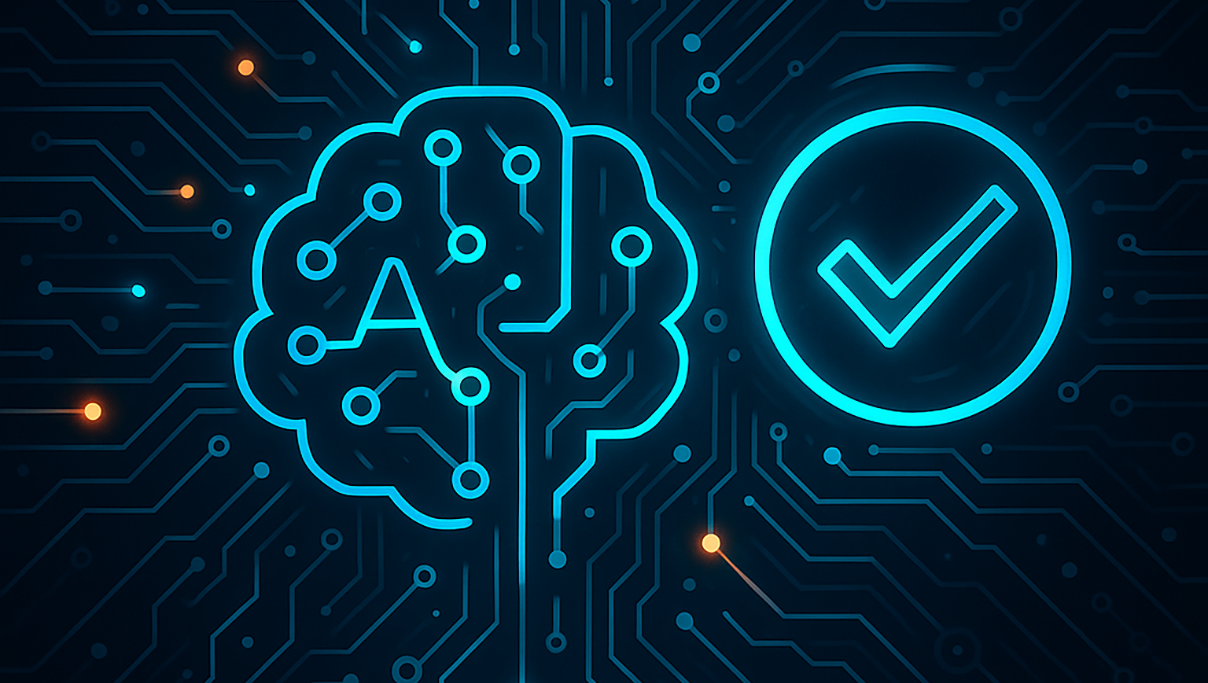
CrewAI vs LangGraph vs n8n: Comparing the Top AI Agent Frameworks for Developers
Forget what you know about AI models. A significant shift is underway: autonomous agents that can execute complex tasks using tools and reasoning without constant human oversight. At the heart of this transformation are agentic frameworks, the foundational architectures that enable developers to orchestrate everything from large language models (LLMs) to tools and memory systems into successful AI-based applications.
A significant wave of these frameworks appeared in late 2023 and early 2024, quickly gaining traction and signaling a market-wide shift towards more sophisticated AI systems. This has created a rich and varied ecosystem, with contributions from big companies like Microsoft and OpenAI, nimble startups like CrewAI, and even passionate community projects. Choosing the right framework is a crucial decision, as it will directly impact your team’s efficiency, the project’s scalability, and the long-term success of your solution.
Below is a detailed comparison of frameworks we have evaluated through hands-on development: CrewAI, LangGraph, and n8n. To help you prioritize your project’s needs, we have evaluated each framework across a number of key criteria. (The ratings on a 1-10 scale are based on an arbitrary system where 1 signifies a feature that is badly implemented or non-existent, 5 indicates a standard or unremarkable implementation, and 10 represents a truly exceptional capability in its given category.)
CrewAI: Orchestrating Collaborative Teams
CrewAI is an open-source as well as an enterprise framework designed to create and manage teams of AI agents that collaborate to complete complex tasks efficiently. It allows different AI agents to take on specialized roles such as researchers, writers, coders, or analysts, each contributing with their expertise within a pre-defined “crew” structure where they can communicate.
Framework Flexibility and Architecture
CrewAI offers a highly flexible and modular architecture centered around role-based “crews” and “flows”. The addition of “flows,” CrewAI’s programmable workflow structures, allows its core agent crew mechanic to shine while keeping the application structured and rigid. The created crews can also function on their own, sending information between themselves and acting based on predefined behaviors. It supports both sequential and hierarchical processes, with the latter leveraging an LLM-powered manager for dynamic task delegation. This balance of structure and customizability makes creating complex agentic flows easier.
3Pillar rating: 8/10
Integration Capabilities
CrewAI provides strong integration capabilities through its modular tool system, allowing agents to interact with external APIs, databases, and other systems. While the open-source version primarily relies on custom tool creation via Python code, its enterprise offering, CrewAI Enterprise, significantly expands this by providing a wider array of pre-built connectors for popular business applications. At the same time, the possibility of custom tools is always a necessity for more flexible applications.
3Pillar rating: 6/10
LLM Agnosticism & Pricing Models
CrewAI is highly LLM-agnostic, supporting most commercial and open-source LLMs out of the box while including the ability to integrate custom LLMs.
It provides token usage metrics for transparency and offers max_rpm settings for rate-limiting agents to avoid API limits. The enterprise pricing is tiered rather than pay-as-you-go, the framework encourages the building of more complex tasks as it is tier based on the number of monthly executions. This means small tasks executed often can rack up very high costs while big flows running less often can keep the cost lower. The pricing also takes the number of crews and developers into account, making its viability dependent on your specific use case and team structure.
3Pillar rating: 8/10
Security and Compliance
While the base open-source framework doesn’t provide enterprise-level compliance certifications (like GDPR/HIPAA) out of the box, it is designed to be privacy-preserving by default. It provides clear warnings when features that might expose personal data are enabled and offers guidelines for secure integration with external services, emphasizing best practices like HTTPS, input validation, and rate limiting.
The base framework doesn’t provide enterprise-level compliance certifications (like GDPR/HIPAA) out of the box, but it tries to support such requirements being custom implemented. On the other hand, the enterprise version of CrewAI is fully HIPAA and SOC2 compliant and has built-in security protocols and the option for on-premise deployment.
3Pillar rating: 8/10
Human-in-the-Loop (HitL) and Other Features
CrewAI includes robust Human-in-the-Loop (HitL) capabilities, allowing for configurable breakpoints where human input can be requested, reviewed, and used to guide or correct agent execution. This can include the ability to pause, receive webhooks, and resume with feedback. Beyond HitL, CrewAI excels in multi-agent collaboration, enabling agents to delegate tasks and ask each other questions. It also supports multimodal agents, expanding its applicability.
3Pillar rating: 6/10
Orchestration and Monitoring
CrewAI is designed for robust orchestration of multi-agent systems. It is geared more towards longer running operations rather than small quick tasks based on the pricing tiers as well as the structure of using crews. It has demonstrated scalability in production environments for both its open-source and enterprise versions.
While the open-source version lacks a native monitoring dashboard, it offers extensive integrations with third-party observability platforms (e.g., OpenLIT, Maxim AI, Langfuse). On the other hand the enterprise version provides its own built-in monitoring. This built in system along with the integrations provides comprehensive monitoring, tracing, performance analytics, cost tracking, and error logging, giving users good insights into agent behavior.
3Pillar rating: 8/10
Documentation and Support
As one of the first and oldest agent frameworks, CrewAI has comprehensive and vast documentation, including API references and a rich collection of practical examples and tutorials. It also benefits from a very active and growing open-source community, providing forums and discussions for specific problems. For enterprise users, dedicated professional support is available, with higher-paid tiers offering senior CrewAI staff help and onboarding possibilities and production deployments.
3Pillar rating: 9/10
LangGraph: Building Complex Workflows with State Machines
LangGraph, an open-source framework developed by LangChain, is designed for constructing and deploying AI agent workflows agents using a state graph architecture. It’s particularly well-suited for long-running, multi-step reasoning tasks with a multitude of possible tooling while staying easily integratable with the broader LangChain ecosystem.
Framework Flexibility and Architecture
LangGraph’s core is a graph-based architecture where nodes represent functional blocks such as LLM calls, custom code, or tool calls, and edges define the flow between the logic blocks. This design is excellent for complex, non-linear workflows and agents that require adaptive behavior at runtime. LangGraph is a low-level framework with immense versatility as each part can be custom-coded. Its Command type further enhances this by allowing nodes to dynamically specify the next node to execute, which simplifies “handoffs” in complex multi-agent architectures.
3Pillar rating: 9/10
Integration Capabilities
Due to its deep integration with the LangChain ecosystem, LangGraph can leverage an extensive component library out of the box. This includes pre-made agents, tools, and connectors for databases as well as third-party APIs. The framework also provides a way to create fully configurable and codable tools, meaning anything that can be integrated with code can be made available to LangGraph agents. The output structure of a created LangGraph agent system is fully customizable, allowing for very high integration capabilities into any other application by wrapping it in APIs, A2A protocol structures, etc..
3Pillar rating: 9/10
LLM Agnosticism & Pricing Models
Through its integration with LangChain tools, this framework can connect to any LLM provider, such as OpenAI, Anthropic, Google Gemini, and Azure. The connectors are predefined and can be integrated simply by importing them and adding environment variables with access keys. This ease of integration lets developers add multiple LLMs or providers, switch between them on the go, and keep up with trends or needs. While LangGraph lacks in-built cost control, it integrates seamlessly with LangSmith, which provides token usage and cost tracking for detailed monitoring and optimization.
3Pillar rating: 10/10
Security and Compliance
There are no built-in security or compliance features included in LangGraph. However, its highly configurable nature means that any necessary security features can be implemented and specifically tailored to the application or added via third-party integrations available to LangChain, such as CodeGate and Microsoft Presidio for PII redaction and code scanning. Deployment options include both on-premise self-hosting and hosting on LangGraph’s online platform, both viable options for secure deployment.
3Pillar rating: 6/10
Human-in-the-Loop (HitL) and Other Features
LangGraph provides robust Human-in-the-Loop (HitL) capabilities, enabling human intervention at any point within an agent’s runtime. A key feature is the graph’s persistent execution state, using state checkpointing, which allows workflows to pause indefinitely. Breakpoints can be set both statically before a node executes (e.g., using an interrupt_before edge) as well as dynamically inside a node or a tool call (e.g., using the interrupt() primitive). In addition, LangGraph provides streaming capabilities for agent state and outputs and “time travel” capabilities, allowing for the rollback to a previous state for debugging.
3Pillar rating: 8/10
Orchestration and Monitoring
LangGraph excels at orchestration through its graph-based approach, which gives developers explicit control over data flow and tool and LLM calls. The graphs can be deployed in various ways, from basic Dockerized containers and Kubernetes to LangGraph’s proprietary platform. All approaches can be monitored easily using LangSmith with the built-in connectors, or by implementing classical monitoring modes such as call tracing or aggregating logs due to the framework’s configurability.
3Pillar rating: 7/10
Documentation and Support
LangGraph provides extensive and well-structured documentation, including quickstart guides, how-to guides, and comprehensive API references. The popularity of the framework and the wide use of LangChain means that there are numerous tutorials from third-party creators. This popularity also leads to third-party service and application providers adding their own tools into the LangChain framework, which takes the burden off the LangChain team and lets them actively improve the framework and provide support. The fact that LangGraph is free to use means no personal on-demand support is provided, and any bugs need to be entered into the classic GitHub flow.
3Pillar rating: 7/10
n8n: Low-Code Automation for the Enterprise
n8n (pronounced n-eight-n) is an open-source workflow automation tool that helps you connect any app with an API with any other, and manipulate its data with little or no code. It’s highly flexible and allows for building custom nodes. It can be self-hosted for privacy and security or used with a cloud hosting option.
Framework Flexibility and Architecture
n8n is an open-source workflow automation tool that allows users to connect various applications and services through a visual interface. Built on Node.js, n8n utilizes a microservices architecture, enabling scalability and flexibility. This architecture allows users to run n8n on their own servers or in the cloud. Users can create custom nodes and workflows, making it adaptable to specific business needs, and can extend functionality through JavaScript code in workflows.
3Pillar rating: 7/10
Integration Capabilities
n8n supports over 200 integrations with popular applications and services, including CRMs, databases, and APIs. This extensive library allows users to automate tasks across different platforms seamlessly. Users can connect to any service with an API, enabling the integration of custom applications and services not natively supported. The ability to set up triggers and actions facilitates complex automation scenarios.
3Pillar rating: 8/10
LLM Agnosticism & Pricing Models
n8n is designed to work with various large language models (LLMs) and AI services, allowing users to choose the best tools for their needs without being locked into a single provider. As an open-source platform, n8n can be self-hosted at no cost, making it an attractive option for businesses looking to minimize expenses. Users only incur costs related to hosting and any third-party services they integrate.
3Pillar rating: 7/10
Security and Compliance
n8n emphasizes security with features like end-to-end encryption, secure API keys, and user authentication. Users can control data flow and access permissions within workflows. The platform can be configured to meet various compliance standards, such as GDPR, and by self-hosting, organizations can maintain complete control over their data, enhancing security and compliance capabilities.
3Pillar rating: 8/10
Human-in-the-Loop (HitL) and Other Features
n8n supports human-in-the-loop workflows, allowing for manual intervention at critical points in automated processes, a feature essential for tasks requiring human judgment or approval. It also includes features like error handling, conditional workflows, and scheduled tasks, providing users with robust tools to manage complex automation scenarios effectively.
3Pillar rating: 8/10
Orchestration and Monitoring
n8n excels at orchestrating complex workflows that involve multiple services and applications, with a visual interface that makes processes easier to understand and manage. The platform provides monitoring capabilities to track workflow execution, performance metrics, and error logs, helping users identify issues and optimize workflows for better performance.
3Pillar rating: 9/10
Documentation and Support
n8n offers extensive documentation, including tutorials, API references, and community forums. As an open-source project, it has a vibrant community that contributes to its development and provides support. For organizations requiring additional assistance, n8n offers professional support services, ensuring that users can get help when needed.
3Pillar rating: 8/10
Comparative Analysis and Conclusion
There is no “one agentic framework to rule them all” so selecting one needs to be based on which one excels in the categories most important to your specific project. Our analysis of CrewAI, LangGraph, and n8n reveals distinct strengths for each framework.
- CrewAI brings great customisation options alongside a more pre-defined structure in the form of its “crew” and “flow” providing a solid foundation for complex, long-running, and AI-intensive tasks. The enterprise-grade features, including HIPAA and SOC2 compliance and built-in monitoring, make it a strong contender for organizations with strict security and oversight requirements.
- LangGraph is the most solid choice for developers with a strong coding background who require a high level of control over custom workflows. Its graph-based architecture offers unparalleled flexibility for complex, stateful, and non-linear agentic flows. The seamless integration with the LangChain ecosystem and tools like LangSmith makes it a powerful option, especially for projects where avoiding vendor lock-in is a priority.
- n8n is ideal for businesses that prioritize quick implementation and visual workflow management. Its low-code/no-code approach, combined with extensive out-of-the-box integrations, makes it an excellent choice for a wide range of automation needs. It’s a good starting point for teams looking to streamline operations with a high degree of control over data and security, particularly for straightforward integrations and prototyping.
Framework Comparison Chart
To summarize the key differences, here’s a comparative chart of the three frameworks:
| Criterion | CrewAI | LangGraph | n8n |
|---|---|---|---|
| Framework Flexibility | (8/10) Highly flexible, role-based “crews” and “flows” | (9/10) Highly flexible, graph-based state machine architecture | (7/10) Visual low-code/no-code interface, custom nodes via code |
| Integration Capabilities | (6/10) Strong via modular tools; custom Python tools or enterprise pre-built connectors | (9/10) Deep integration with LangChain ecosystem; fully customizable with code | (8/10) Over 200 native integrations; connects to any API |
| LLM Agnosticism & Cost | (8/10) Strong LLM agnosticism with token usage metrics; tiered pricing on enterprise | (10/10) Strong LLM agnosticism via LangChain; no cost for framework, relies on LangSmith for monitoring | (7/10) Works with various LLMs; free self-hosting or managed cloud services |
| Security & Compliance | (8/10) Privacy-preserving by default; enterprise version is HIPAA & SOC2 compliant | (6/10) No built-in features; requires custom implementation or third-party integrations | (8/10) Strong security features; self-hosting allows for full data control & compliance |
| Human-in-the-Loop | (6/10) Configurable breakpoints for human input | (8/10) Robust capabilities with state checkpointing and interrupt primitive | (8/10) Manual intervention at critical points in workflows |
| Orchestration & Monitoring | (8/10) Robust orchestration for multi-agent systems; enterprise monitoring dashboard | (7/10) Graph-based orchestration; integrates with LangSmith for monitoring | (9/10) Visual workflow orchestration; built-in monitoring for execution and errors |
| Documentation & Support | (9/10) Comprehensive docs, active community, professional enterprise support available | (7/10) Extensive docs, large community, no personal support | (8/10) Extensive docs, vibrant community, professional support available |
| Best For | Collaborative, long-running, and complex multi-agent tasks in an enterprise setting | Highly custom, stateful, and non-linear agentic workflows for experienced developers | Visual, low-code automation and rapid prototyping in various business contexts |
The choice between these frameworks ultimately comes down to your organization’s specific needs, your team’s technical expertise, and the complexity of the problem you’re trying to solve. CrewAI, LangGraph, and n8n represent distinct but powerful approaches to building autonomous AI systems, each with a unique value proposition for technical leaders looking to innovate and drive efficiency.
Choosing the right framework is a critical decision. Our team at 3Pillar can help you evaluate your options, build a custom strategy, and develop the powerful AI solutions your business needs. Let’s discuss how we can help you get started.





